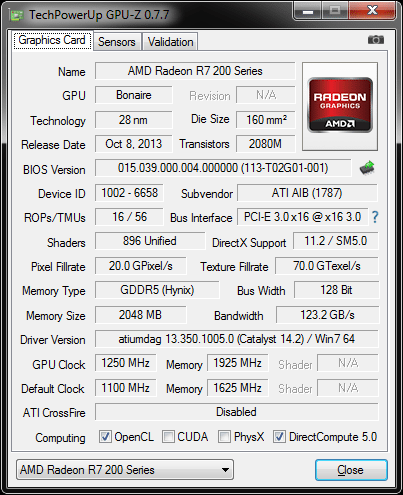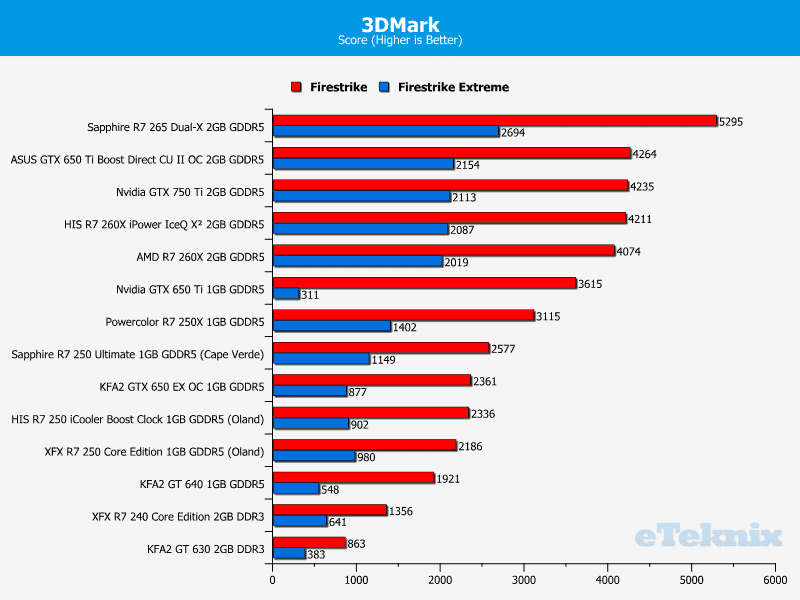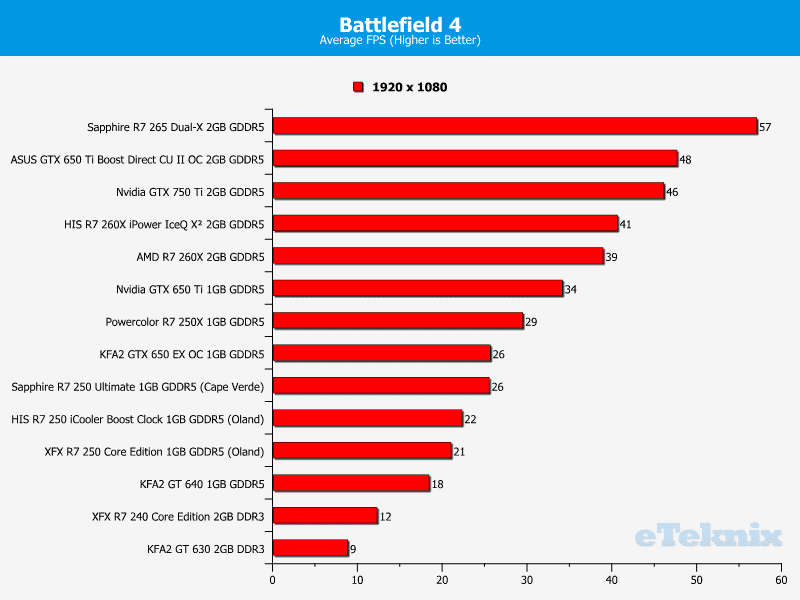HIS R7 260X iPower IceQ X² 2GB Review
Ryan Martin / 11 years ago
Overclocking & Overclocked Performance
The overclocking ability of a graphics card is an important buying consideration irrespective of whether the graphics card is low end or enthusiast level. I’m sure everyone will agree that the more extra performance from overclocking – the better. In our overclocking we push each graphics card to its maximum stable core and memory frequencies. Typically we also raise the power limit to the maximum and where possible raise the voltages if this results in higher overclocks being achieved. We always aim for “24/7” stable overclocks that DO NOT result in potential heat on longevity issues so if we do raise the voltage it is still kept within safe parameters. The latest beta version of MSI’s Afterburner software is the overclocking utility of choice: this is because MSI Afterburner Beta versions typically allows you to circumvent overclocking restrictions – particularly those set by AMD.

Overclocking was immensely impressive given how far the R7 260X is pushed at stock. The core managed an extra 150MHz which made this card on par with the overclocked Nvidia GTX 750 Ti. The memory overclocked by a staggering 300MHz actual, 1.2GHz effective, and this is largely due to the use of Hynix GDDR5 chips which always overclock better than Samsung or Elpida equivalents. Despite the impressive overclocking abilities an overclocked R7 260X is miles away from an overclocked R7 265 despite only being $10-20 away in price.





















